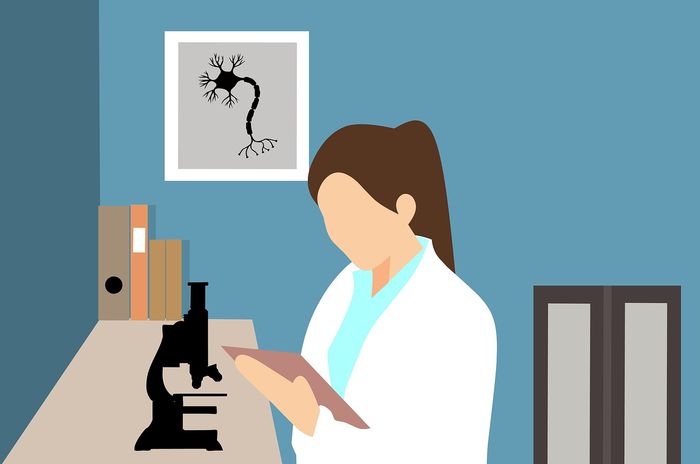‘We’ve been taught nothing about menopause’: Medic explains what you should know and why you need to know more about it
Georgie Acott, a third-year Medic at Caius, argues that Cambridge should do more to educate medics and non-medics about the menopause

Even after more PSHE lessons discussing ‘tea’ and ‘bananas’ than I can count, and almost three years studying medicine at Cambridge, I’ve been taught next to nothing about menopause – an inevitable process that affects almost half of the world’s population. While roughly 2500 years have passed since the ancient Greeks recognised menopause, there has been relatively little increase in understanding of the process by doctors, policymakers, employers, or the people experiencing these changes themselves.
Menopause education is critical for all of us – including non-medics. Many of my friends are about to enter the working world, providing them with colleagues of a much wider age range than our peers at school and university. The Faculty of Occupational Medicine recently found that nearly 8 out of 10 menopausal people are currently working. Therefore, the lack of education and understanding from all parties seems an oversight in how to best care for, work alongside and deal with the physical and mental health changes associated with ageing.
There is a scientific explanation for menopausal symptoms, just as there is for periods. Menopause is defined as the point at which a woman has not had a period for 12 consecutive months due to activity in the follicles of the ovary (where her eggs develop). In the UK this typically occurs around the age of 51 and represents the ending of the time in which there is potential to conceive a child. There are two main disruptive symptoms associated with the natural processes of menopause: a feeling of brain-fog (experienced by two-thirds) and hot flushes.
“A lack of education about the menopause is causing the UK economy to haemorrhage talent”
Brain fog is believed to arise due to reduced levels of the hormone oestrogen, leading to reported lack of clarity, disruption to memory and associated stress in women. Oestrogen levels first rise during puberty and then fluctuate throughout the menstrual cycle, with levels highest in the middle of the cycle (a week after the end of the last period). In the year preceding, during, and after menopause, there is a dramatic decrease in the production of oestrogen by the body, as the ovaries are stopping their production.
Hot flushes are described as a sudden feeling of unpleasant, rising warmth in the upper body, as if someone has turned on an internal radiator. Normally we begin to sweat following an increase in body temperature of around 0.4 degrees Celcius (a relatively large change when talking about our internal temperature). However, the threshold for this is much lower in women experiencing hot flushes. They begin to feel warm and sweat at much smaller changes in body temperature, arising from simple tasks like standing up.
Both of these symptoms are the result of changing activity of oestrogen in the brain. They are entirely natural, but have a significant impact on sleep patterns, with many people reporting low mood and increased stress levels.
The lack of scientific education about menopause is leading to a lack of understanding and appreciation of the real basis of its symptoms. It is therefore unsurprising that over 10% of women attend the GP over 10 times before receiving adequate help or advice. Many women report that they do not feel the symptoms are ‘real’ or significant enough for them to warrant any medical assistance. However, many people experience an improvement in this symptom following the beginning of hormone replacement therapy (HRT), demonstrating the ability to manage these changes if recognised.
The lack of education on menopause for non-medics has significant implications for the workplace. It is widely acknowledged that women are underrepresented in top-ranking positions (there are just nine female CEOs in the FTSE 100). Some cite maternity leave as a hindrance to the progression of women up the job ladder, while others emphasise the need for more female role models. Yet what is rarely commented on, is the number of women leaving the workforce in their late forties and early fifties, due to menopausal symptoms. Perhaps a better understanding of the science would allow us to seek and provide help more successfully, allowing more women to climb to the top.
“My experience of school and Cambridge University medical education has done nothing to fill this void”
Proposals by Tory MP Caroline Noakes and a report by the Women and Equalities Committee both express concerns about menopause causing the UK economy to ’haemorrhage talent’. Without government policy changes, we remain reliant on individual employers to provide a tourniquet. The government recently rejected Noakes’s proposals to make menopause a protected characteristic under the Equality Act of 2010, citing concerns over the ‘potential for creating new areas of dispute over self identity and concerns about hierarchies of rights’, as well as increasing ‘discrimination against men with long term medical conditions’.
No discussion of this policy that I have read has had any mention of the scientific basis of these symptoms, leaving peoples’ legitimate experiences up for debate without knowledge of what leads to them. My experience of school and then university medical education has done nothing to fill this void. This may be a consequence of the traditional nature of the Cambridge medicine course where we focus more on protein channels than whole people for the first three years (great for nerds like me, perhaps less so our knowledge of actual patients). However, this is also a consequence of a lack of education at the school level, the last time most people have any form of formal scientific education.
Without appropriately educating us all, we are producing doctors and colleagues uninformed about the common experiences of our peers’ and patients’ lives. School and university curriculum organisers, as well as the student body, should collectively work to address this absence in education and inform scientifically grounded menopause policy in the workplace.
 News / Proposed changes to Cambridge exam resits remain stricter than most7 May 2024
News / Proposed changes to Cambridge exam resits remain stricter than most7 May 2024 News / Cambridge students set up encampment calling for Israel divestment6 May 2024
News / Cambridge students set up encampment calling for Israel divestment6 May 2024 Features / Cambridge punters: historians, entertainers or artistes? 7 May 2024
Features / Cambridge punters: historians, entertainers or artistes? 7 May 2024 Sport / The ‘netball girl’: myth or reality?7 May 2024
Sport / The ‘netball girl’: myth or reality?7 May 2024 Theatre / A nuanced and neurodivergent Carrie comes to the ADC6 May 2024
Theatre / A nuanced and neurodivergent Carrie comes to the ADC6 May 2024






